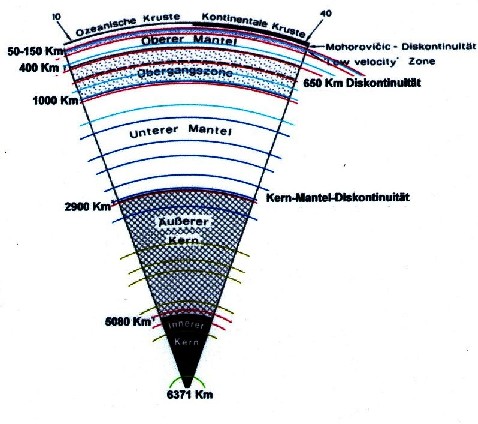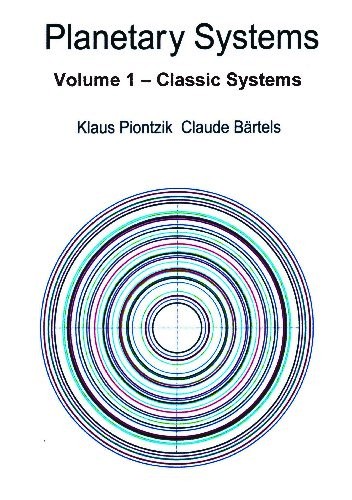| Copyright © Klaus Piontzik | ||
| German Version |
| The now widely accepted model for the formation of the moon states that
about 4.5 billion years ago, a celestial body called Theia, the size of Mars, collided almost
grazingly with the proto-Earth.
Theia herself was completely destroyed in this collision. The fragments created by the impact collected in an orbit around the Earth. Most of the impactor merged with the proto-Earth to form Earth. According to current simulations, the moon formed at a distance of around three to five Earth radii, i.e. at an altitude of between 20000 km and 30000 km. From the debris of the collision, the proto-moon was formed immediately (i.e. in less than 100 years), which quickly collected all the remaining debris and after almost 10,000 years must have condensed into a moon with a mass close to today's. At that time it orbited the Earth at a distance of only around 60,000 km (double planet), which must have led to extreme tidal forces that deformed the Earth and the Moon into an egg shape. The tidal forces were about 200 times stronger than today. Since practically the entire planet formed a magmatic mass and was therefore much more mobile than today, parts of the mass could be raised by around 1 to 2 km due to the tidal movement. With the sole influence of rotation and gravity, there would be a continuous distribution of mass in the Earth, but no shell formation. According to chapter 3.5 Layer structure of the earth <==> earth's vibration structure According to Chapter 4.6.1: The earth's magnetic field is related to the shape of the earth in terms of a three-axis ellipsoid. According to Chapter 5.1, the three vibration structures that arise from the basic shell, the outer core and the inner core are identical to the earth's vibration structure. At that time, the Earth's rotation time was about 4 hours, which was about 6 times faster than today. This had a direct impact on the earth's magnetic field, which was about 6 times stronger than today. Since the earth's matter has para/dia/ferro magnetic properties and therefore magnetic fields can also exert force on the material in question, the formation of the geological shells can be explained if one assumes: |
| Earth's magnetic field <==> Earth's vibration structure |

| Illustration 5.2.1 – geological layers |
| At the beginning of the earth's creation, when the geological shells were formed, the magnetic vibration structure served as the crystallization basis for the liquid, magmatic matter. |
| 5.2.1 - Theorem: | Layers = accumulations of maximum vibration states ==> Energy supply |
| The formation of geological layers can be explained as a resonance phenomenon. The surrounding matter may or may not be in resonance with the layers (and their frequencies). a) Where the surrounding matter is in resonance with the frequencies of the magnetic layers, a separation of the material phases occurred through the supply of energy and the application of force. b) Where the matter was not in resonance with the frequencies of the magnetic layers, crystallization occurred in certain crystal forms. |
| 5.2.2 - Conclusion: | The earth's magnetic field and the magnetic oscillation structure have existed since the formation of the earth's core and at the latest since the formation of the geological shells. |
| According to Chapter 4.6.5 Theorem 4.6.5.1 applies:
All polyhedra are possible as vibration figures. This could have served as the basis for the crystallization of the magmatic matter during the formation of the geological shells. Therefore, the polyhedron systems would be geological manifestations or crystallizations of the vibrational structure of that time. |
| 5.2.3 - Theorem: | Theorem: Polyhedral systems are geological crystallizations of the magnetic oscillation states that prevailed during the formation of the earth's core and the geological layers. |

|
200 sides, 23 of them in color 154 pictures 38 tables Production und Publishing: ISBN 978-3-7357-3854-7 Price: 25 Euro |